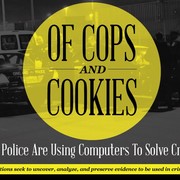Catching criminals with computer forensics
 Forensic investigators look to uncover, analyze and preserve evidence to be used in criminal proceedings—and they’re increasingly turning to computer forensics for support. Some crimes in which computer forensics may help lead to conviction include murder, terrorism, organized crime, smuggling, extortion, tax evasion, sexual harassment, embezzlement, corporate espionage, fraud and medical malpractice. There are now 16 regional computer forensic labs (RCFLs), federal labs that aid city, county and state jurisdictions in investigating crimes, nationwide.Computer forensics proved to be crucial in convicting Philip Markoff, also known as the Craigslist Killer, who bound and robbed three women, killing one. Police used video surveillance to find images of the killer and traced the phones he used to call the victims to disposable phones. They traced the email used to respond to the Craigslist ads to the IP address of Philip Markoff. The police then followed Markoff and gathered his fingerprints, which matched those found at the crime scenes. Markoff was indicted for first-degree murder, armed robbery and other charges.To learn how computer forensics helped in the criminal investigations involving the BTK Killer, Scott Peterson and Casey Anthony, check out this infographic presented by ComputerScienceDegreeHub.com.
Forensic investigators look to uncover, analyze and preserve evidence to be used in criminal proceedings—and they’re increasingly turning to computer forensics for support. Some crimes in which computer forensics may help lead to conviction include murder, terrorism, organized crime, smuggling, extortion, tax evasion, sexual harassment, embezzlement, corporate espionage, fraud and medical malpractice. There are now 16 regional computer forensic labs (RCFLs), federal labs that aid city, county and state jurisdictions in investigating crimes, nationwide.Computer forensics proved to be crucial in convicting Philip Markoff, also known as the Craigslist Killer, who bound and robbed three women, killing one. Police used video surveillance to find images of the killer and traced the phones he used to call the victims to disposable phones. They traced the email used to respond to the Craigslist ads to the IP address of Philip Markoff. The police then followed Markoff and gathered his fingerprints, which matched those found at the crime scenes. Markoff was indicted for first-degree murder, armed robbery and other charges.To learn how computer forensics helped in the criminal investigations involving the BTK Killer, Scott Peterson and Casey Anthony, check out this infographic presented by ComputerScienceDegreeHub.com.

